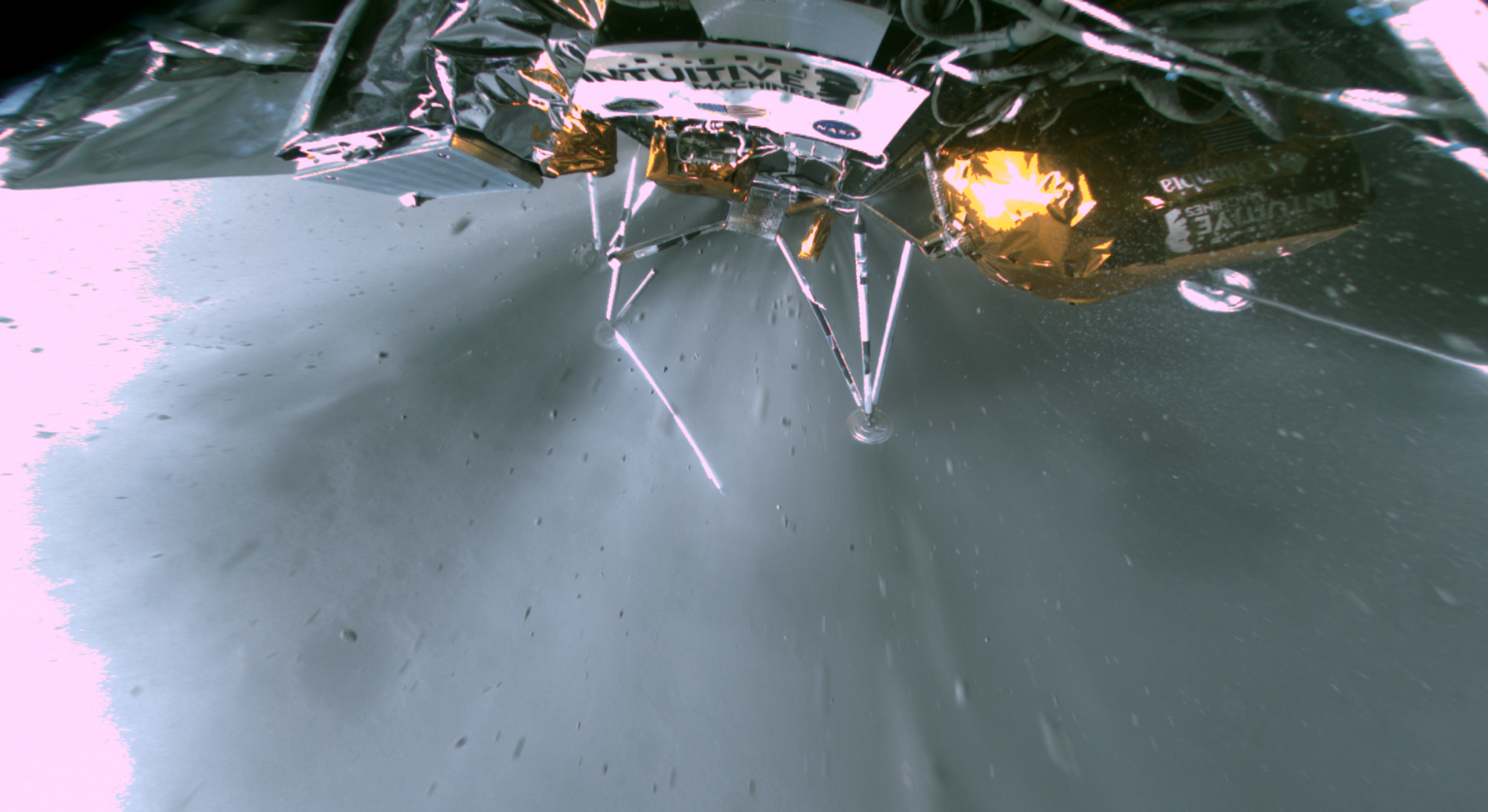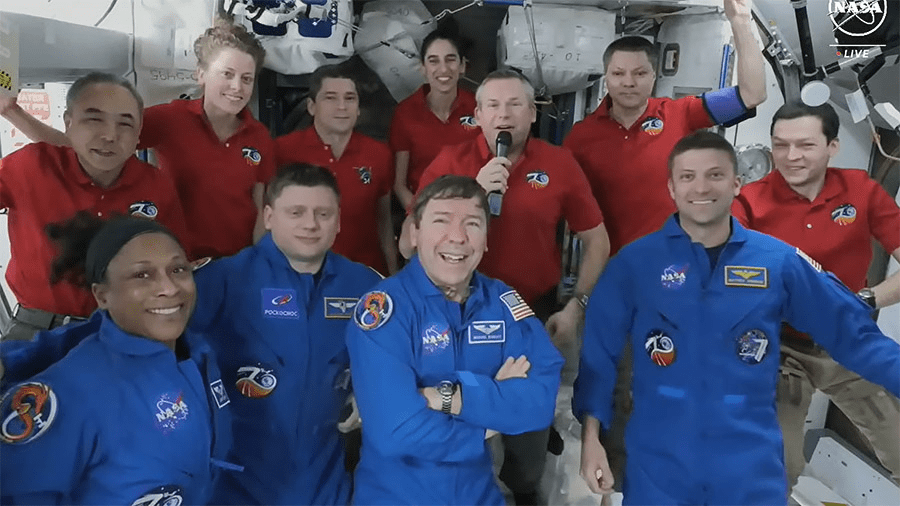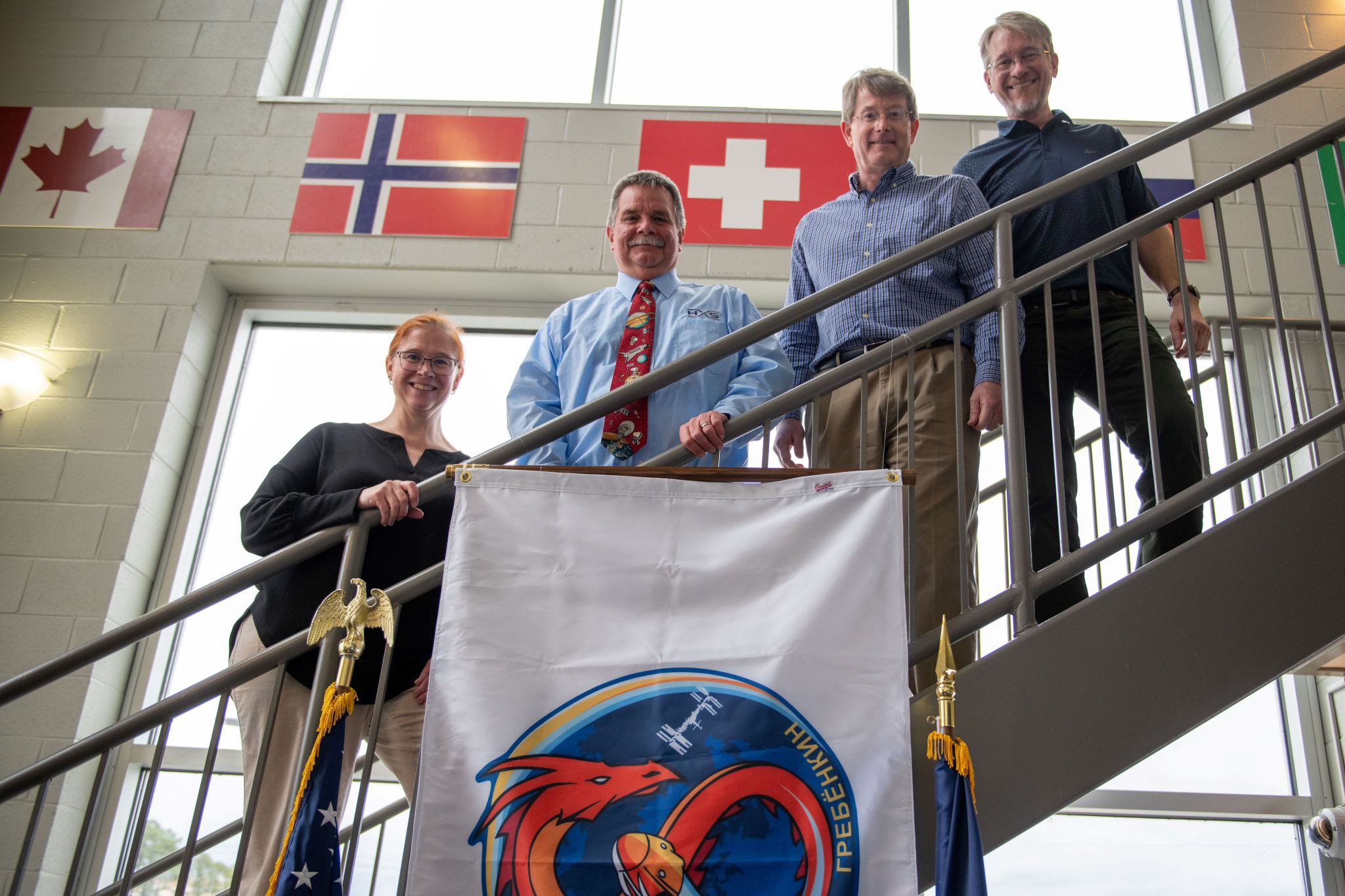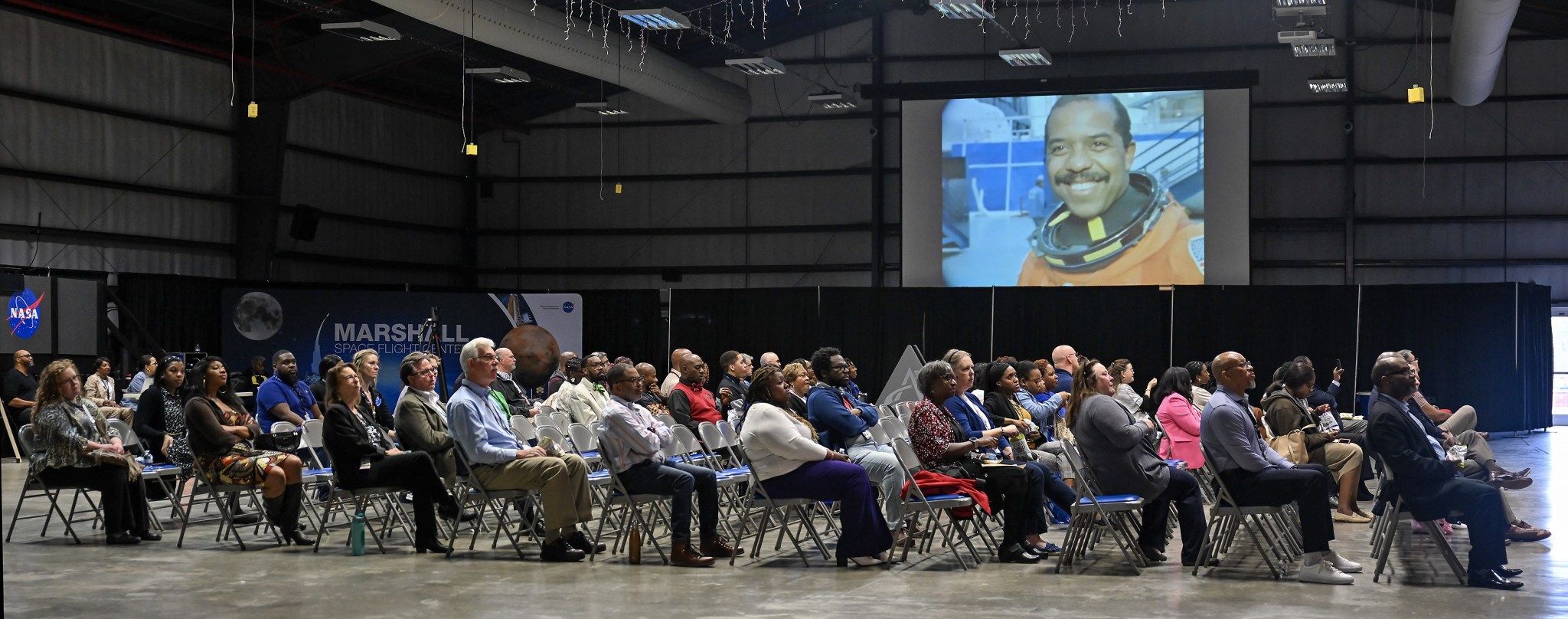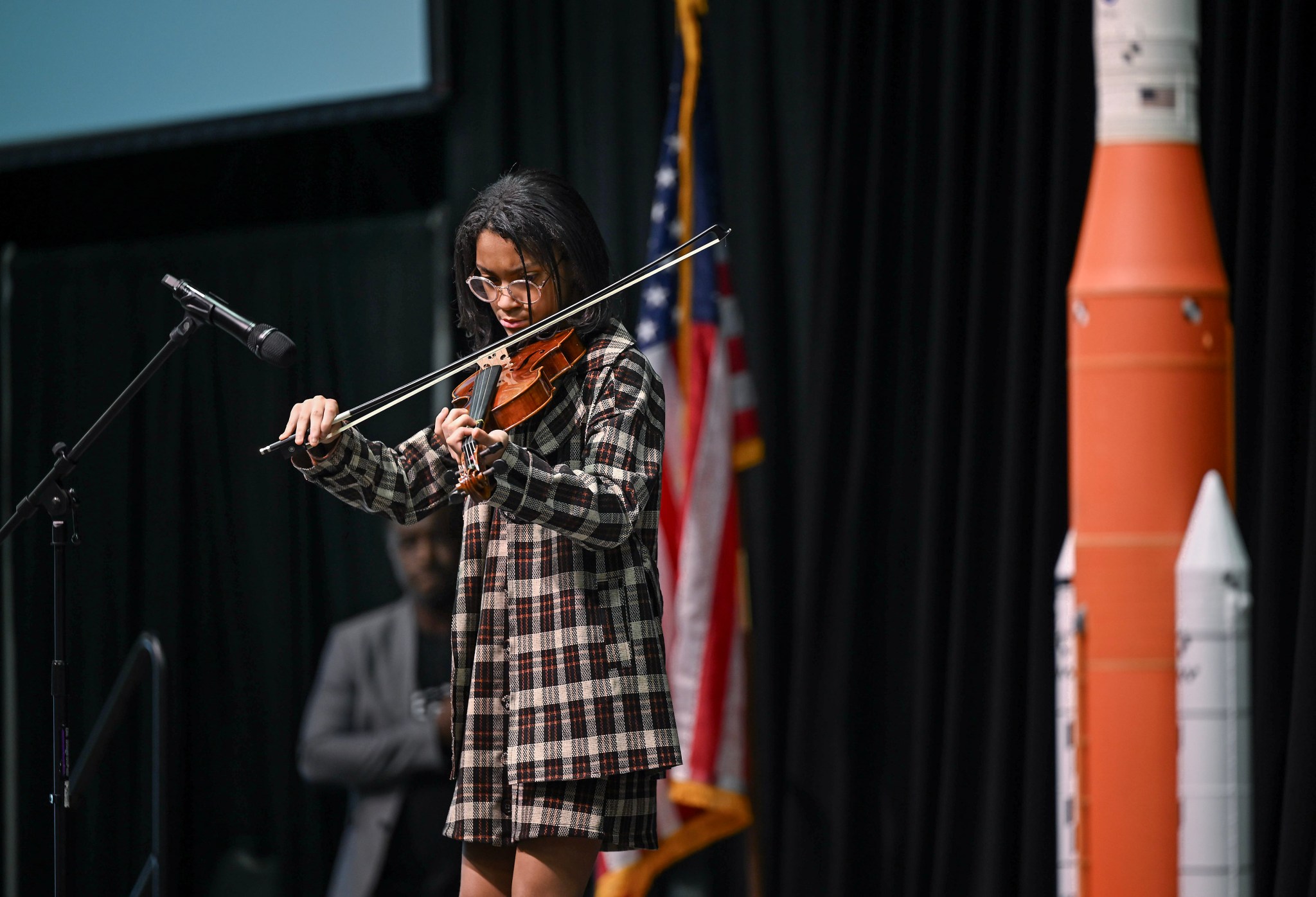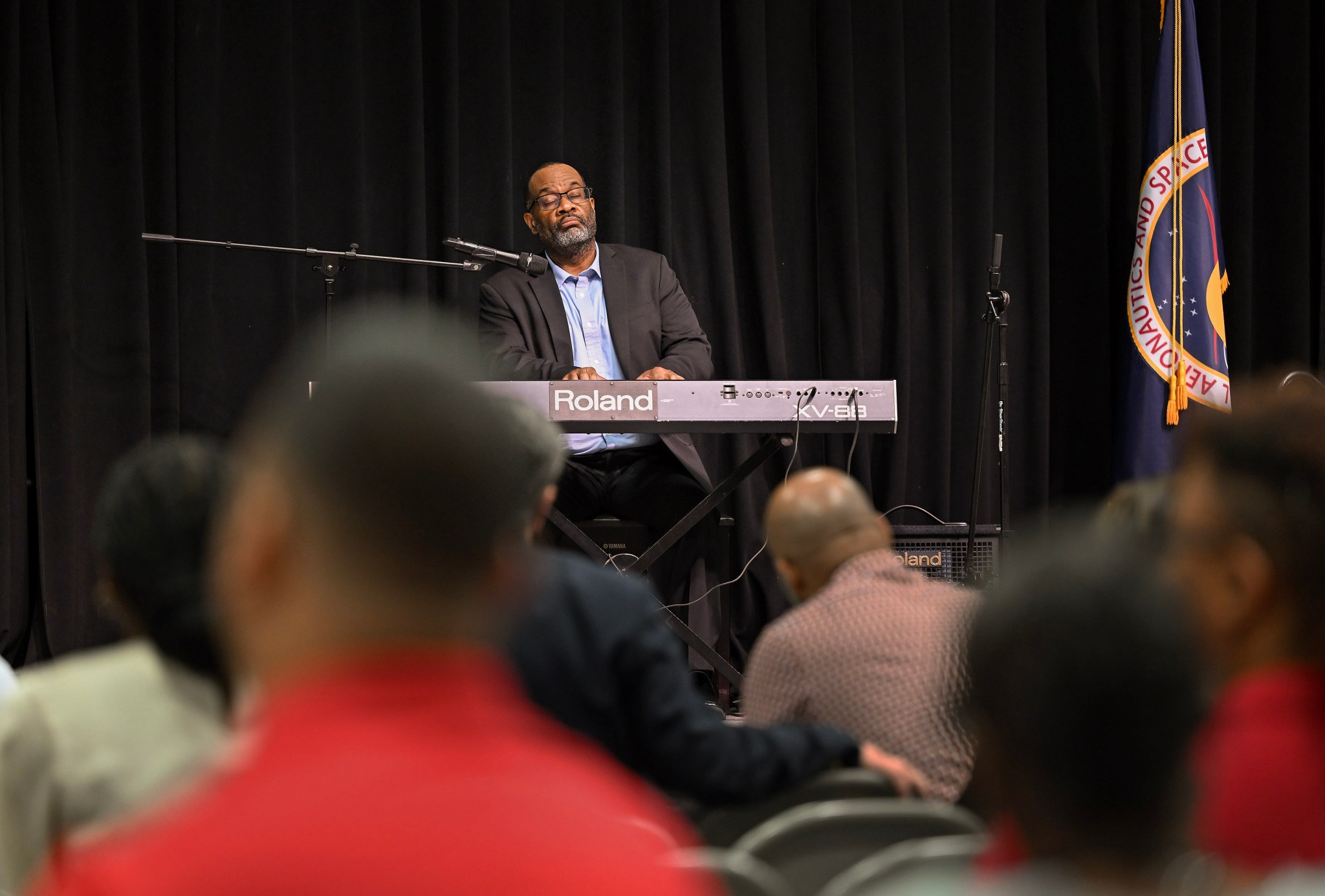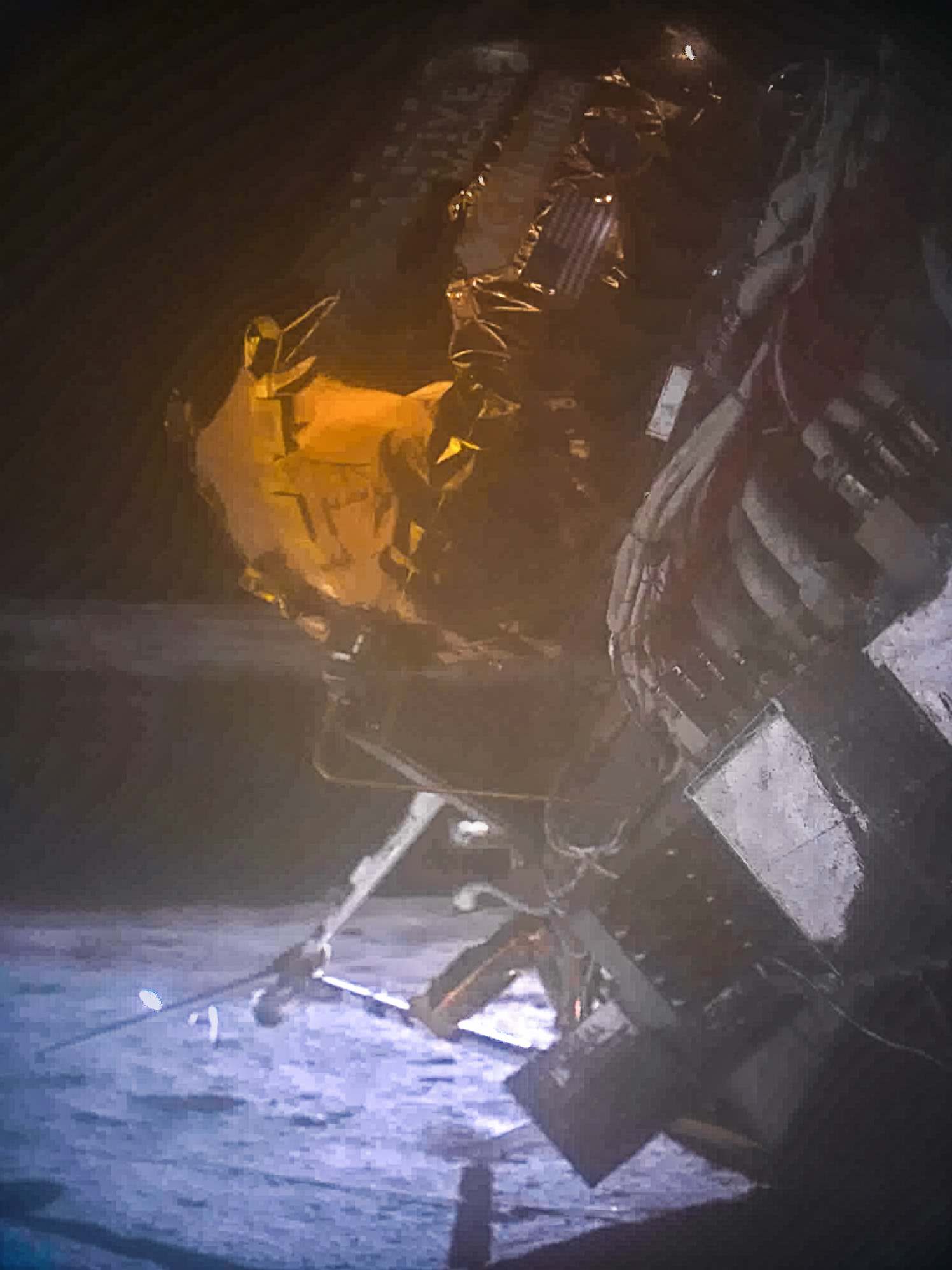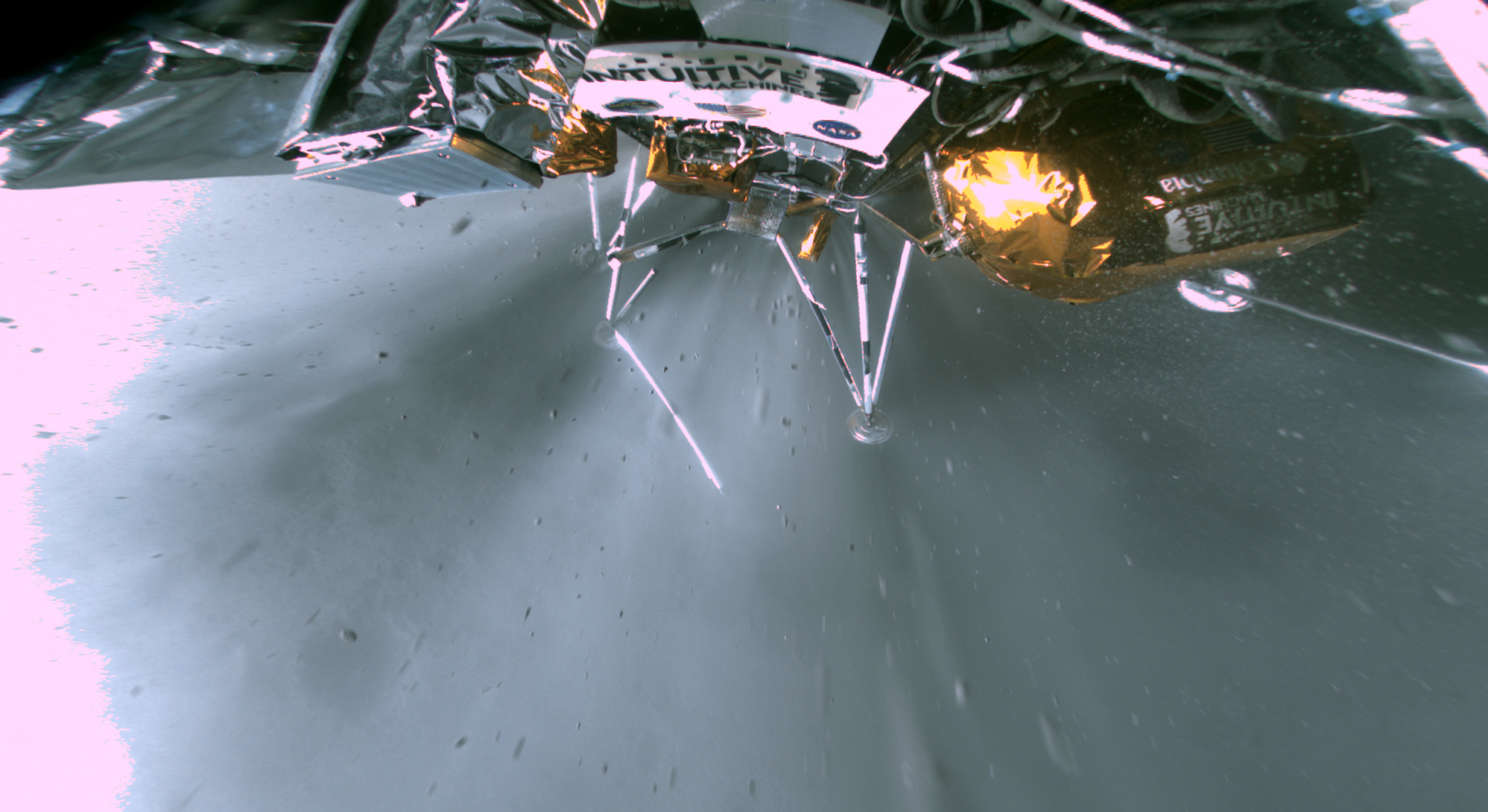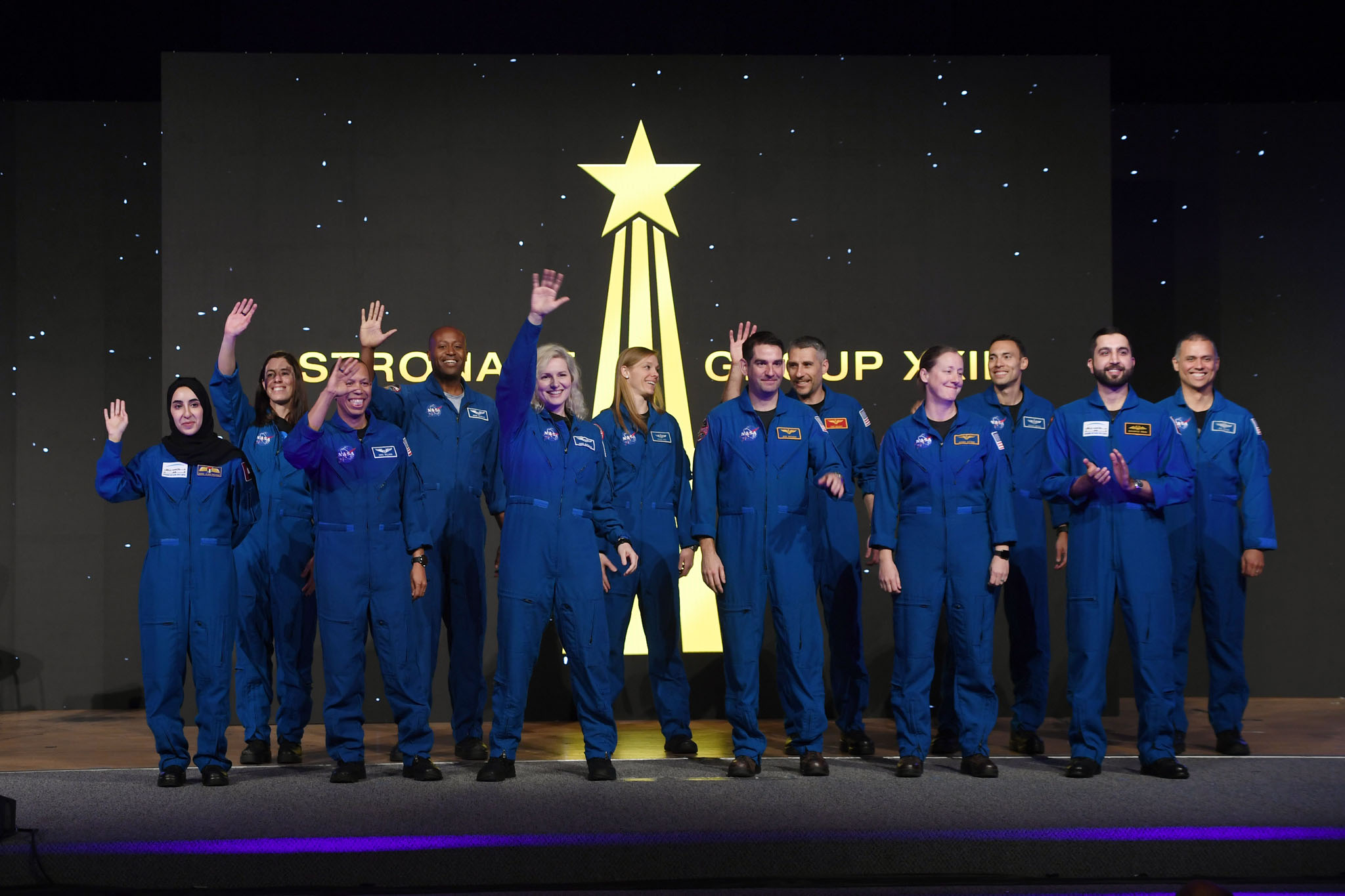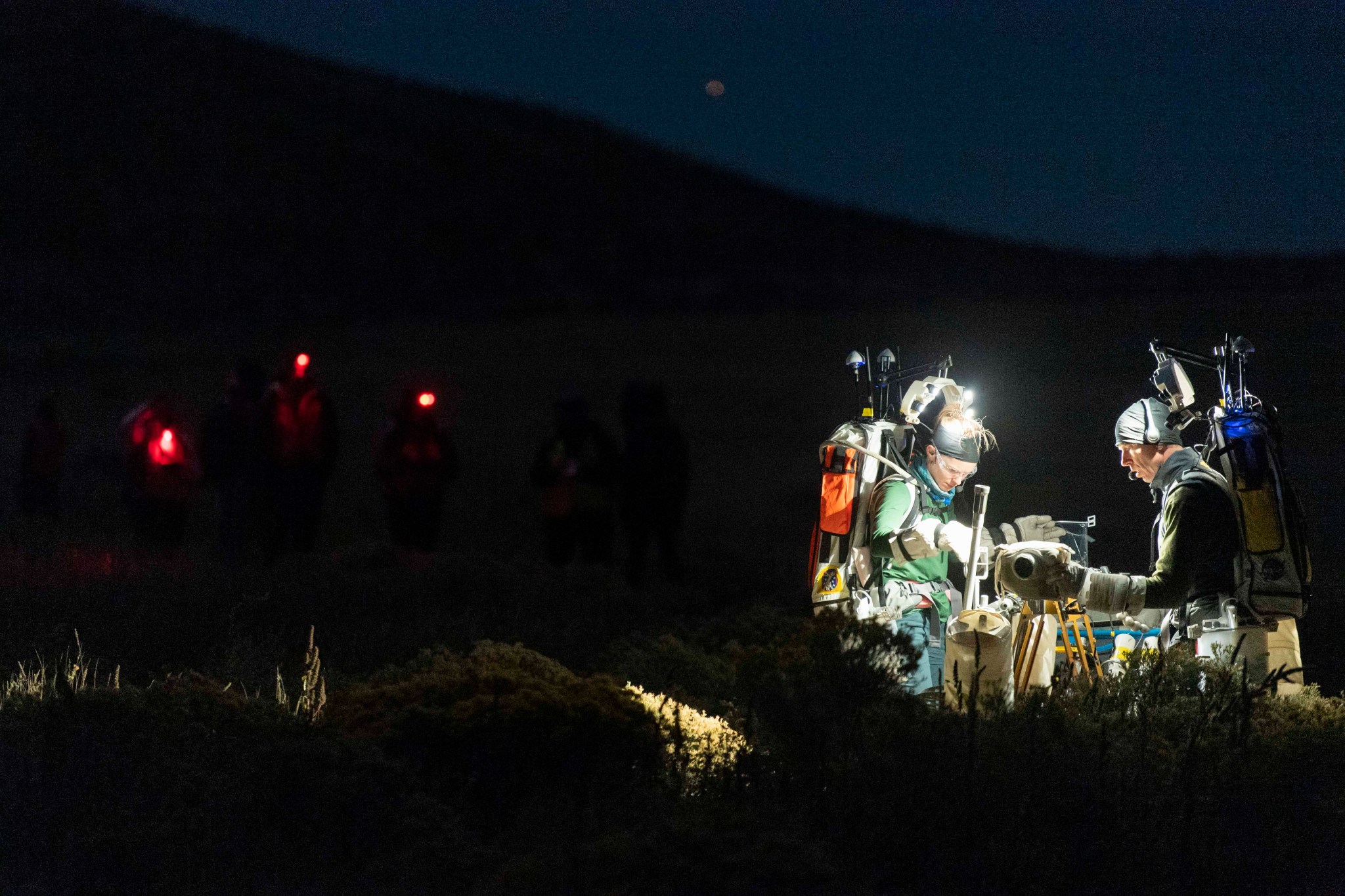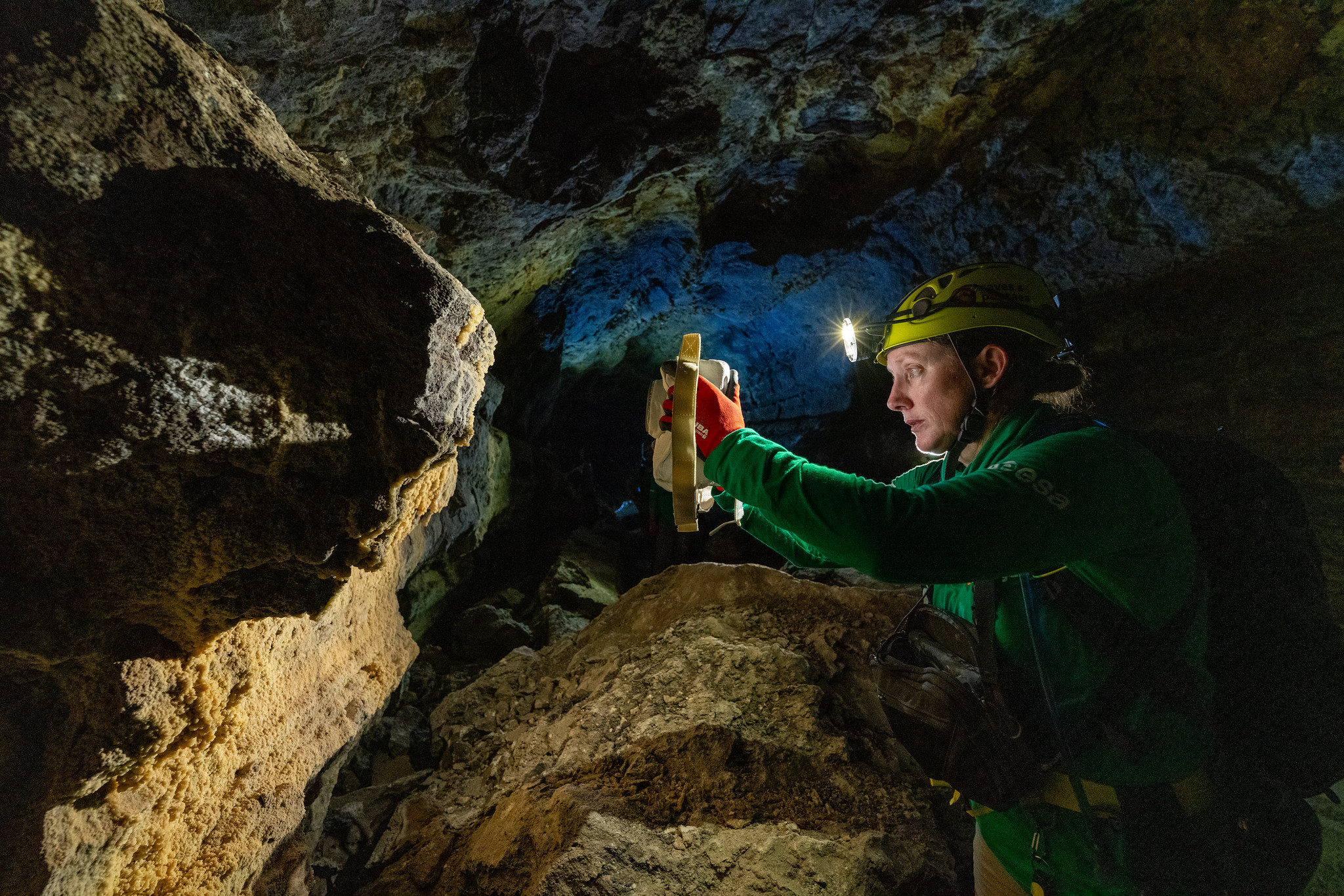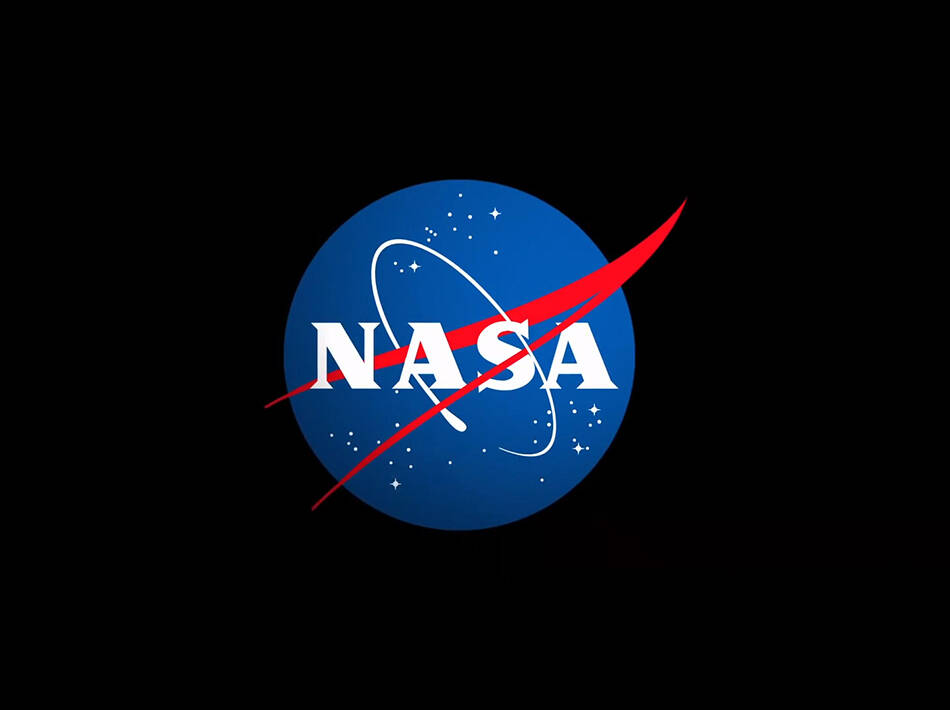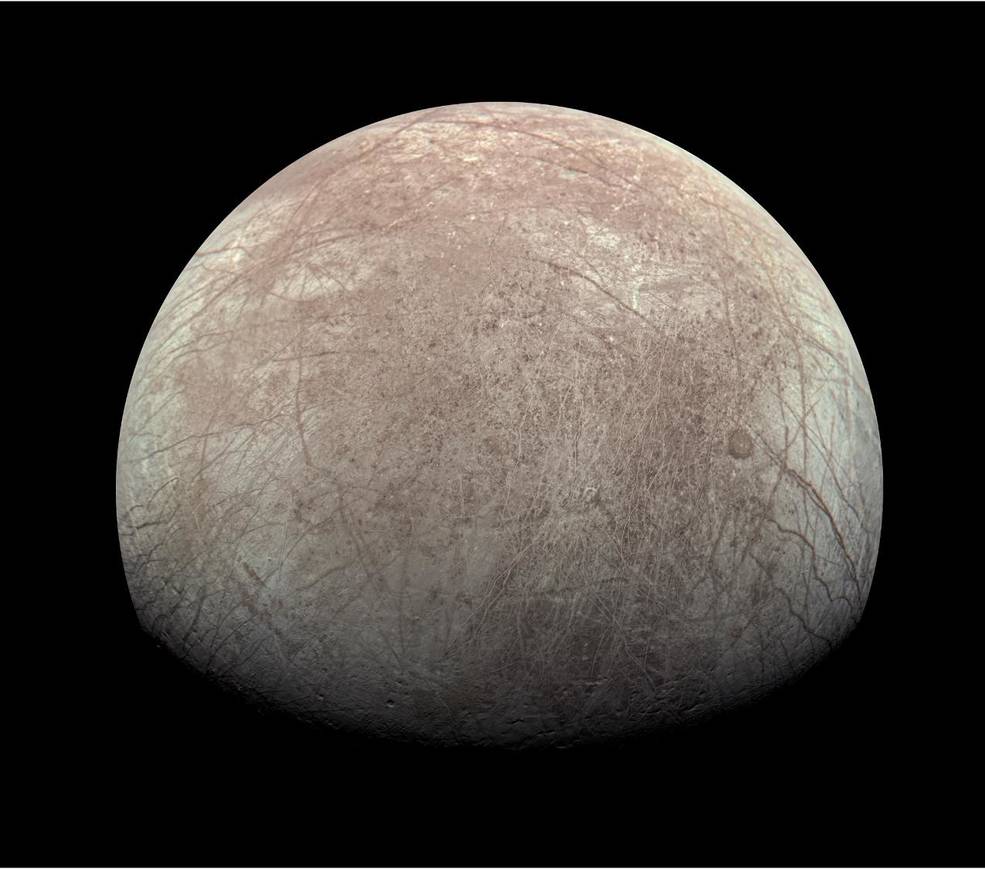Marshall Supports NASA’s SpaceX Crew-8 Launch
By Jessica Barnett
Team members at NASA’s Marshall Space Flight Center celebrated another successful launch as astronauts on NASA’s SpaceX Crew-8 mission began the journey to the International Space Station in the late hours of March 3.
Marshall’s support team is part of the agency’s CCP (Commercial Crew Program) team, which partners with private companies, such as SpaceX, to develop commercial crew space transportation capabilities to and from the space station.
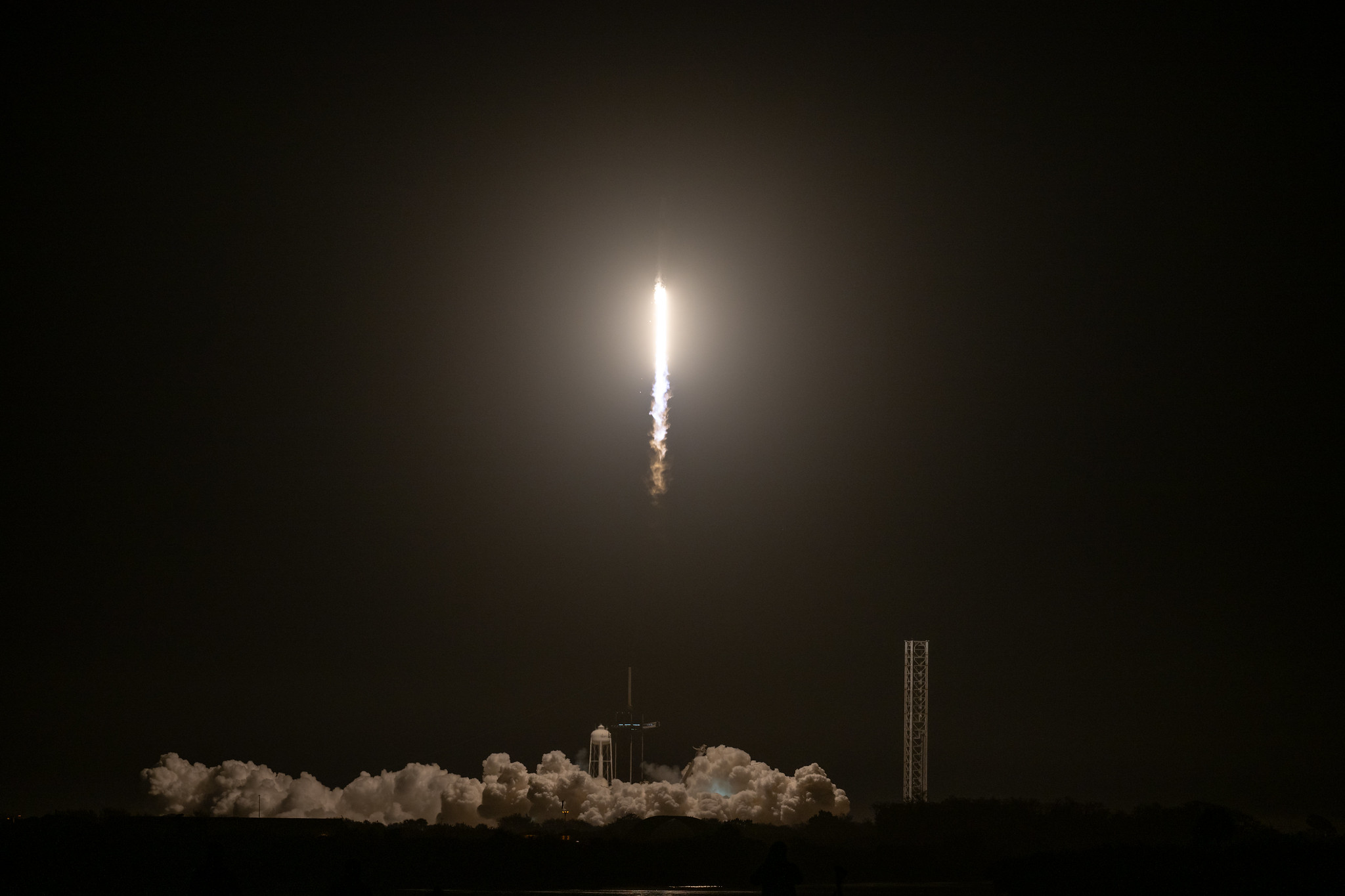
Long before liftoff, the Marshall team was hard at work to ensure the launch vehicle was ready for spaceflight. For Mark Armstrong, a testing verification analyst for CCP at Marshall, that meant carefully reviewing any changes made to SpaceX’s Falcon 9 rocket after the Crew-7 mission in August 2023, and making sure those changes are consistent with flight requirements ahead of Crew-8’s launch.
“My work is generally done before launch date, so for the day of launch, I get to sit back and enjoy watching Crew-8 ride to the International Space Station,” Armstrong said. “Then, I’m looking ahead to the next mission.”
Others, like David Gwaltney, remain on the clock for day-of launch operations. Gwaltney serves as a technical assistant for CCP’s Launch Vehicle Systems Office at Marshall, working with other teams to make sure the launch vehicle is certified for flight.
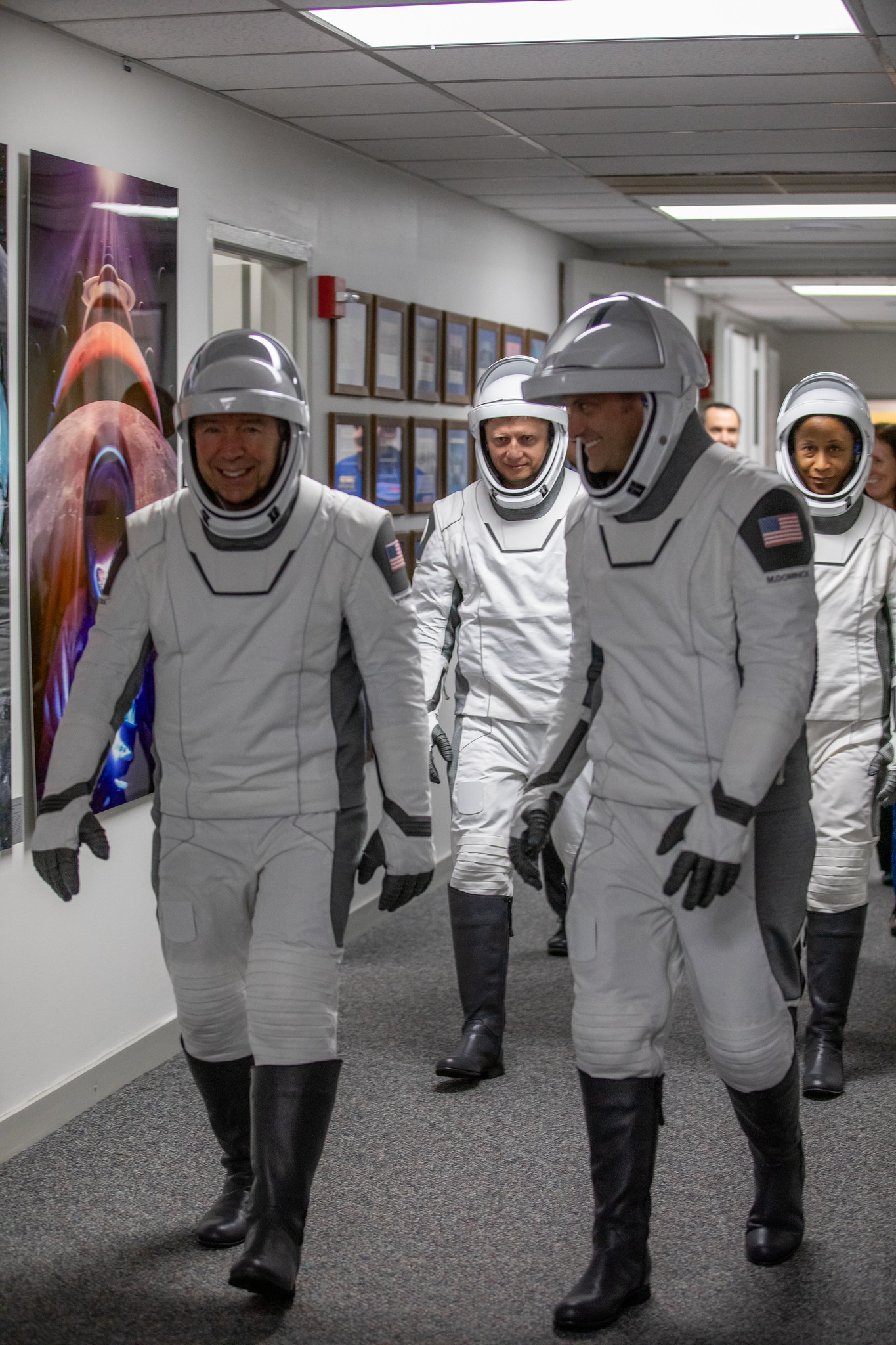
On the day of launch, Gwaltney joins team members in the HOSC (Huntsville Operations Support Center), a multi-mission facility that provides engineering and mission operations support for the space station, CCP, and more.
Crew-7 launched early in the morning, but “this time around, I showed up to the HOSC around dinnertime,” Gwaltney said. “Mostly, I monitored the launch system to make sure everything’s working properly, the vehicle is healthy during flight, and the crew makes it to orbit safely.”
Crew-8 reached orbit after a successful launch from Launch Complex 39A at NASA’s Kennedy Space Center, eventually docking on the space station at 1:28 a.m. CST March 5. It’s the agency’s ninth crewed mission with SpaceX to the space station, launching five years and one day after NASA’s first uncrewed orbital flight, Demo-1, with SpaceX.
“We even had a shooting star during ascent! This launch was tremendous,” said Maggie Freeman, program analyst supporting the Launch Vehicle Systems Office within the Commercial Crew Program at Marshall. “Crew-8 now marks 50 people who we have successfully flown into space on Crew Dragon in just five short years. I’m immensely proud of our team and looking forward to many more milestones.”
“We are all contributors to making history and forging the future of space travel and exploration,” said Deborah Crane, launch vehicle chief engineer for the Commercial Crew Program at Marshall. “Increasing our knowledge of our planet, solar system, and universe is always inspirational and exciting. I am so proud to be part of the Commercial Crew Program and to work with such a talented and dedicated team.”
Crew-8 will conduct new scientific research to prepare for human exploration beyond Low Earth orbit, including a study of brain organoids to understand neurodegenerative disorders, shifts in body fluids during spaceflight, and the effects of UV radiation and microgravity on plant growth. In all, more than 200 science experiments and technology demonstrations will take place during their mission.
Barnett, a Media Fusion employee, supports the Marshall Office of Communications.
Huntsville Operations Support Center Raises Flag for Crew-8 Mission
By Celine Smith
Team members at NASA’s Marshall Space Flight Center gathered to unfurl a flag for NASA’s SpaceX Crew-8 mission on Feb. 28, just days before Crew-8 launched to the International Space Station on March 3.
The flag raising has been a tradition for missions supported at Marshall’s HOSC (Huntsville Operations Support Center), as well as a tradition within the CCP (Commercial Crew Program) to celebrate the successful conclusion of NASA’s Agency Flight Readiness Review prior to launch. The Crew-8 mission event was the first flag raising to be held as a joint effort between the PMOD (Payload and Mission Operations Division) and CCP team. Marshall team members from both organizations were in attendance.
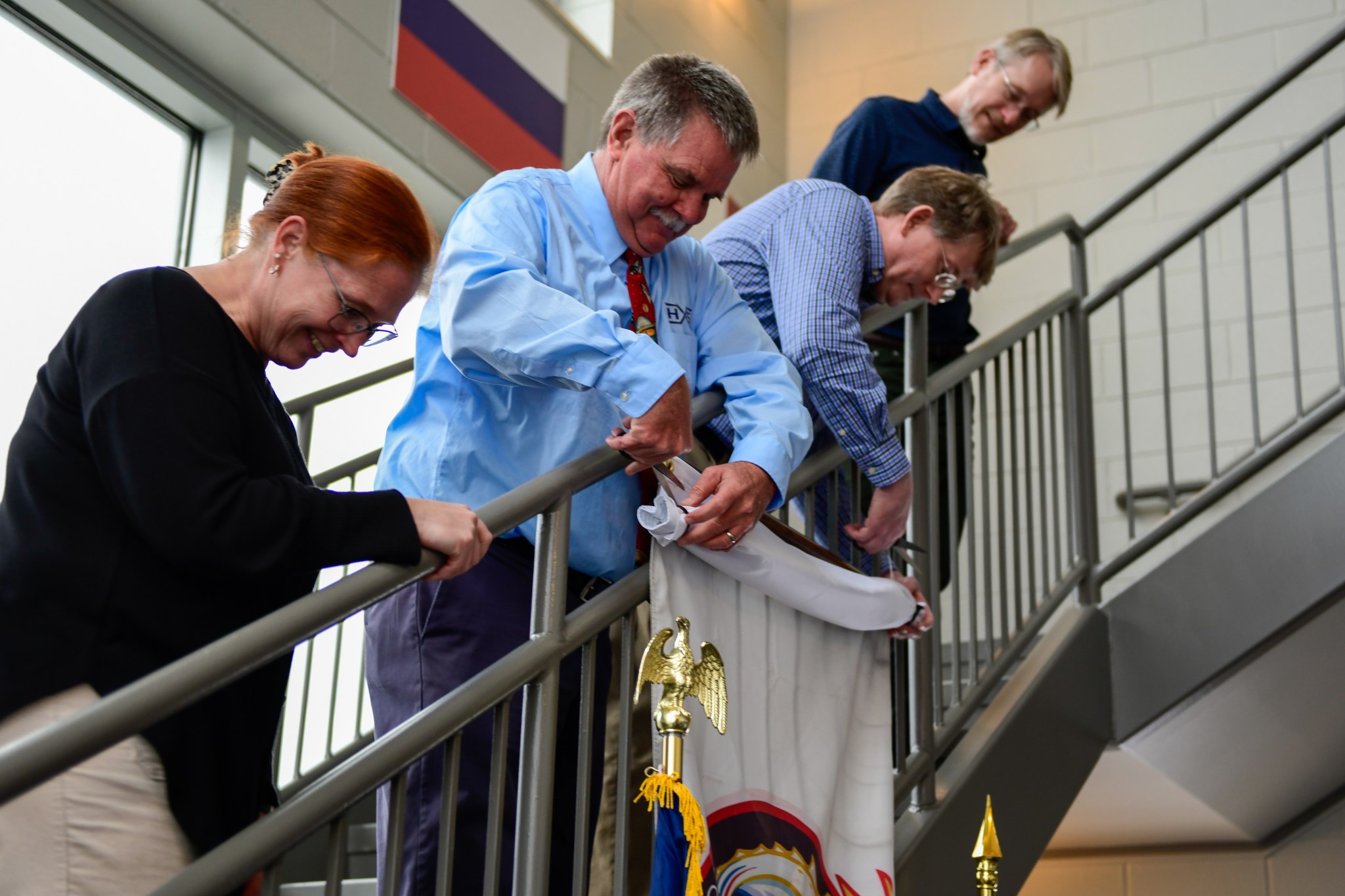
The HOSC is a multi-purpose facility that provides engineering and mission operations support for the space station, NASA’s Commercial Crew Program, and Artemis missions as well as science and technology demonstration missions. The Marshall team that supports the agency’s CCP partnered with the HOSC during the SpaceX Demo-2 crewed test flight in 2020. Since then, the team has continued to utilize the HOSC for simulations, static fires, and launch operations, including the Crew-8 mission. The Payload Operations Integration Center within the HOSC operates, plans, and coordinates the science experiments onboard the space station 365 days a year, 24 hours a day.
Two engineers were selected to unveil and raise the Crew-8 mission flag for their exemplary work.
Eric Earhart, the rotordynamics lead, was selected by the CCP team for his in-depth analysis of numerous turbopump data sets from past commercial missions in preparation for the Crew-8 mission. Through his role, Earhart identified trends and potential risks within critical turbopump dynamic performances, which led to a better understanding of their behavior. Earhart’s thorough research of turbopump performances allowed launch vehicle management and the propulsion team to have an accurate risk assessment before the mission, according to Dave Gwaltney, technical assistant for CCP’s Launch Vehicle Systems Office.
“We are so grateful for Earhart’s tremendous contributions to the Crew-8 mission,” Gwaltney said.
Rick Oelkers, the data operations training lead and HOSC resource specialist, was chosen from the PMOD to assist in the flag ceremony. Oelkers was acknowledged as a key interface for coordinating the usage of the HOSC for CCP and ensuring the Operations Support Team is prepared for each mission. Oelkers also has been integral to the division’s efforts to operate more efficiently and in the training of ground systems flight control personnel in preparation for the Crew-8 mission. In his training role, Oelkers creates new programs to better educate HOSC ground controllers.
“Oelkers is the glue that holds the HOSC ground operations team together and he’s an invaluable member of the Payload Mission Operations Division,” said Nicole Pelfrey, PMOD manager.
“We’re excited to be supporting the mission and celebrating the launch together while recognizing our team members,” Gwaltney said.
Watch a highlight from the flag event here.
Smith, a Media Fusion employee, supports the Marshall Office of Communications.
BEAM Celebrates Black History Month with ‘The Color of Space’ Screening
By Celine Smith
As part of the observance of Black History Month, the Black Employees and Allies of Marshall (BEAM) employee resource group invited NASA Marshall Space Flight Center team members to watch “The Color of Space.”
The film is a NASA documentary where active and retired African American astronauts – including Jeanette Epps, Stephanie Wilson, and Leland Melvin – share their stories and answer questions from Vanessa Wyche, director of the agency’s Johnson Space Center. The Marshall screening was Feb. 27 in Activities Building 4316.
“We hope to foster a deeper understanding of the diverse narratives within the Black community that are sometimes overlooked and misunderstood,” said Nick Benjamin, president of BEAM, and a payload operations director at Marshall. “Our aim is not only to commemorate the past but also to inspire ongoing conversations, awareness, and actions that promote equity, inclusivity, and positive change.”
Larry Leopard, Marshall’s associate director, technical, attended the event. He gave a speech about the importance of instilling diversity and equality within Marshall and at NASA.
BEAM’s goal for Black History Month was to showcase and honor the historical contributions, feats, and overall legacy of Black people at NASA and in the country. BEAM’s theme for the month was “African Americans and the Arts.”
Laila Willis, a 12-year-old violinist from Maitland Conservatory, performed “Lift Every Voice and Sing” by John and James Johnson before the screening. She was followed by Whitney Davis, a data management coordinator in the Payload Operations Integration Center. Davis performed an original spoken word poem titled, “We Are Black History.” To end the event, Kim Jones, a systems engineer for SLS (Space Launch System), performed “Trouble of the World” by Mahalia Jackson.
BEAM is an employee resource group created by NASA’s ODEO (Office of Diversity and Equal Opportunity) to connect African American team members at Marshall. BEAM’s mission is to cultivate and encourage a culture of diversity, while providing resources to team members to help develop their careers.
Benjamin was asked by the ODEO to become president of the BEAM group at Marshall in 2019. “Coming from a small town in South Alabama and being one generation removed from sharecroppers, it makes me proud to be a part of such a great history and to also be a part of what NASA will mean for generations to come,” Benjamin said. “I carry the responsibility to make a lasting impression not only at NASA but also on the world.”
The group decided on the name BEAM to encompass their cause. “We want to be the ‘beam’ of light to help someone find their way,” Benjamin said.
Under Benjamin’s leadership, community outreach has become the group’s main focus. Outside of work, BEAM members spend their personal time organizing events to not only engage Black engineers at Marshall, but also positively influence the next generation to pursue an education and career in STEM and the aerospace industry.
“By promoting diversity, equity, and inclusion, BEAM aims to address challenges, drive cultural awareness, and collaboratively work toward a more inclusive workplace where all voices are not only heard, but also valued,” Benjamin said.
BEAM has widened their reach by connecting with other Black employee resource groups in Huntsville to increase visibility of job opportunities for African Americans, create a larger network among Black people, and organize community outreach events. BEAM organized the documentary showing with Jacobs Engineering’s African American employee resource group Harambee, and Amazon’s Black Employee Network.
The organization is also a safe space for Black team members to discuss adversities and issues. Benjamin said being able to freely speak allows for opportunities to address to inequality, which aligns with NASA’s Equity Mission to eliminate barriers within agency programs that underserved and underrepresented communities may face.
“BEAM realizes an inclusive, supportive, and dynamic workplace should value diversity because it promotes the well-being and development of all employees,” Benjamin said. “BEAM aims to provide an environment where we can learn from each other and lift each other as we climb higher.”
Smith, a Media Fusion employee, supports the Marshall Office of Communications.
NASA Collects First Surface Science in Decades via Commercial Moon Mission
For the first time in more than 50 years, NASA was able to collect data from new science instruments and technology demonstrations on the Moon. The data comes from the first successful landing of a delivery through NASA’s CLPS (Commercial Lunar Payload Services) initiative and Artemis campaign.
The six instruments ceased science and technology operations seven days after landing in the lunar South Pole region aboard Intuitive Machines’ Odysseus, meeting pre-launch projected mission operations. Known as IM-1, this was the first U.S. soft landing on the Moon in decades, touching down Feb. 22 and proving commercial vendors can deliver instruments designed to expand the scientific and technical knowledge on the Moon.
Aboard the lunar lander, NASA science instruments measured the radio noise generated by the Earth and Sun. Technology instruments aided Intuitive Machines in navigating to the Moon and gathered distance and speed (velocity) of the lander as it touched down on the lunar surface.
“This mission includes many firsts. This is the first time in over 50 years that an American organization has landed instruments on the surface of the Moon,” said Joel Kearns, deputy association administrator for exploration of NASA’s Science Mission Directorate. “This mission also provides evidence of the Commercial Lunar Payload Services model, that NASA can purchase the service of sending instruments to the Moon and receiving their data back. Congratulations to the entire Intuitive Machines team and our NASA scientists and engineers for this next leap to advance exploration and our understanding of Earth’s nearest neighbor.”
During transit from Earth to the Moon, all powered NASA instruments received data and completed transit checkouts.
- During descent, the Radio Frequency Mass Gauge and Navigation Doppler Lidar collected data during the lander’s powered descent and landing.
- After landing, NASA payload data was acquired consistent with the communications and other constraints resulting from the lander orientation.
- During surface operations, the Radio-wave Observations at the Lunar Surface of the Photoelectron Sheath and Lunar Node-1 were powered on, performed surface operations, and have received data. Lunar Node-1 was developed, built, and tested at NASA’s Marshall Space Flight Center.
- The Stereo Cameras for Lunar Plume-Surface Studies experiment was powered on and captured images during transit and several days after landing but was not successfully commanded to capture images of the lander rocket plume interaction with the lunar surface during landing.
- The Laser Retroreflector Array is passive, and initial estimates suggest it is accessible for laser ranging from the Lunar Reconnaissance Orbiter’s Lunar Orbiter Laser Altimeter to create a permanent location marker on the Moon.
“The bottom line is every NASA instrument has met some level of their objectives, and we are very excited about that,” said Sue Lederer, project scientist for CLPS. “We all worked together, and it’s the people who really made a difference and made sure we overcame challenges to this incredible success – and that is where we are at today, with successes for all of our instruments.”
NASA and Intuitive Machines co-hosted a news conference Feb. 28 to provide a status update on the six NASA instruments that collected data on the IM-1 mission. Mission challenges and successes were discussed during the briefing, including more than 500 megabytes of science, technology, and spacecraft data downloaded and ready for analysis by NASA and Intuitive Machines.
The first images from this historical mission are now available and showcase the orientation of the lander along with a view of the South Pole region on the Moon. Odysseus is gently leaning into the lunar surface, preserving the ability to return scientific data. After successful transmission of images to Earth, Intuitive Machines continues to gain additional insight into Odysseus’ position on the lunar surface. All data gathered from this mission will aid Intuitive Machines in their next two CLPS contracts that NASA has previously awarded.
NASA, SpaceX Test Starship Lunar Lander Docking System
As part of NASA’s Artemis campaign that will establish the foundation for long-term scientific exploration at the Moon, crew will need to move between different spacecraft to carry out lunar landings. NASA and SpaceX recently performed qualification testing for the docking system that will help make that possible.
For the Artemis III mission, astronauts will ride the Orion spacecraft from Earth to lunar orbit, and then once the two spacecraft are docked, move to the lander, the Starship HLS (Human Landing System) that will bring them to the surface. After surface activities are complete, Starship will return the astronauts to Orion waiting in lunar orbit. During later missions, astronauts will transfer from Orion to Starship via the Gateway lunar space station. Based on SpaceX’s flight-proven Dragon 2 docking system used on missions to the International Space Station, the Starship docking system can be configured to connect the lander to Orion or Gateway.
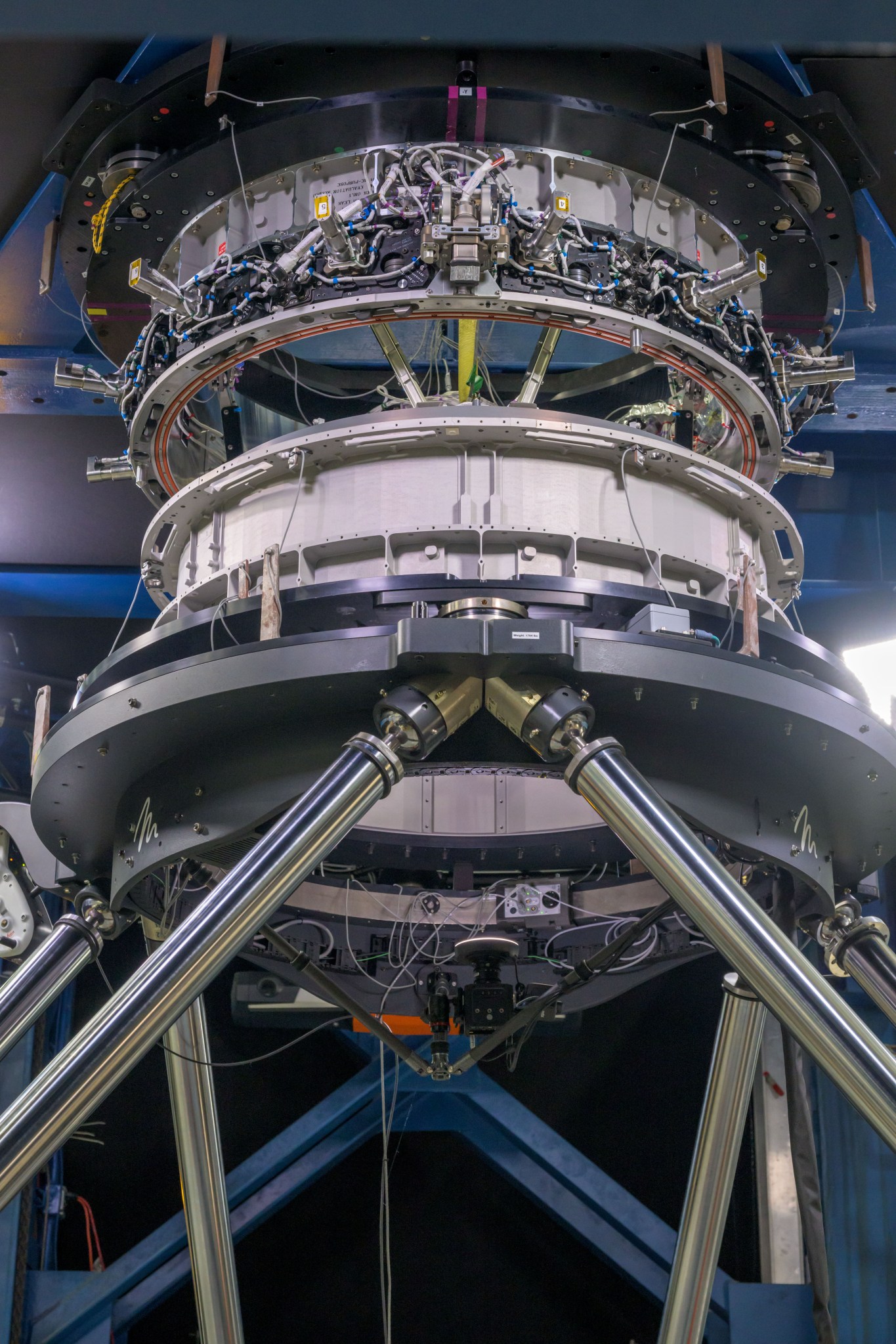
The docking system tests for Starship HLS were conducted at NASA’s Johnson Space Center over 10 days using a system that simulates contact dynamics between two spacecraft in orbit. The testing included more than 200 docking scenarios, with various approach angles and speeds. These real-world results using full-scale hardware will validate computer models of the Moon lander’s docking system.
This dynamic testing demonstrated that the Starship system could perform a “soft capture” while in the active docking role. When two spacecraft dock, one vehicle assumes an active “chaser” role while the other is in a passive “target” role. To perform a soft capture, the soft capture system (SCS) of the active docking system is extended while the passive system on the other spacecraft remains retracted. Latches and other mechanisms on the active docking system SCS attach to the passive system, allowing the two spacecraft to dock.
Since being selected as the lander to return humans to the surface of the Moon for the first time since Apollo, SpaceX has completed more than 30 human landing system specific milestones by defining and testing hardware needed for power generation, communications, guidance and navigation, propulsion, life support, and space environments protection.
Under NASA’s Artemis campaign, the agency will land the first woman, first person of color, and its first international partner astronaut on the lunar surface, and prepare for human expeditions to Mars for the benefit of all. Commercial human landing systems are critical to deep space exploration, along with the SLS (Space Launch System) rocket, Orion spacecraft, advanced spacesuits and rovers, exploration ground systems, and the Gateway space station.
NASA’s Marshall Space Flight Center manages the SLS and human landing system programs.
Agency Opens Astronaut Applications as Newest Class Graduates
NASA welcomed its newest class of next generation Artemis astronauts in a March 5 ceremony at the agency’s Johnson Space Center. The 10 astronaut graduates now are eligible for flight assignments. The agency also announced the opening for the next round of NASA astronaut applications.
“Congratulations to the newest class of NASA astronauts! We are excited to have a new and diverse set of explorers ready to expand humanity’s reach,” said NASA Administrator Bill Nelson. “Astronauts are pioneers who will help us embark on this new era of exploration, and we need more adventurers ready to join the ranks to explore the cosmos, including future missions to the Moon, on to Mars, and beyond.”
Selected for training in 2021, the astronaut graduates were chosen from a pool of more than 12,000 applicants and successfully completed more than two years of required basic training, including spacewalking, robotics, space station systems, and more.
The graduates may be assigned to missions destined for the International Space Station, future commercial space stations, and Artemis campaign missions to the Moon in preparation for Mars.
“Congratulations to NASA and the astronaut graduates,” said U.S. Office of Personnel Management (OPM) Director Kiran Ahuja. “By partnering with OPM, NASA employed an automated and streamlined hiring process to screen applicants for these prestigious roles. OPM is thrilled to continue supporting NASA experts to design and implement their hiring methods.”
“It’s an incredible time to be an astronaut with a variety of spacecraft to fly and more destinations to explore,” said Chief Astronaut Joe Acaba. “I’m honored to welcome these astronauts, congratulate them on their hard work, and look forward to growing our ranks as we help expand humanity’s reach into the solar system.”
The graduating NASA astronauts are Nichole Ayers of Colorado Springs, Colorado; Marcos Berríos of Guaynabo, Puerto Rico; Chris Birch of Gilbert, Arizona; Deniz Bunham of Wasilla, Alaska; Luke Delaney of Debary, Florida; Andre Douglas of Chesapeake, Virginia; Jack Hathaway of South Windsor, Connecticut; Anil Menon of Minneapolis; Chris Williams of Potomac, Maryland, and Jessica Wittner of Clovis, California.
Continuing the long tradition of international partnership, two UAE (United Arab Emirates) astronauts, Nora AlMatrooshi and Mohammad AlMulla of the Mohammad Bin Rashid Space Centre, trained alongside their NASA counterparts for the past two years, as well as participated in the graduation ceremony.
This is one part of the partnership between NASA the UAE, including cooperation on the International Space Station, NASA’s Artemis missions through the Gateway lunar space station, and other activities on Earth and in space that are supporting groundbreaking science and research.
To apply to become a NASA astronaut, applicants should go here.
NASA Signs Agreement with Nikon to Develop Lunar Artemis Camera
When NASA sends astronauts to the South Pole region of the Moon for the first time with its Artemis campaign, they will capture photos with a handheld camera to help advance scientific research and discovery for the benefit of all. NASA and Nikon Inc. recently signed a Space Act Agreement that outlines how they will work together to develop a handheld camera that can operate in the harsh lunar environment for use beginning with Artemis III.
Photographing the lunar South Pole region requires a modern camera with specialized capabilities to manage the extreme lighting conditions and temperatures unique to the area. The agreement enables NASA to have a space-rated camera ready for use on the lunar surface without needing to develop one from scratch.
Prior to the agreement, NASA performed initial testing on a standard Nikon Z 9 camera to determine the specifications a camera would need to operate on the lunar surface. With the agreement in place, teams at NASA’s Marshall Space Flight Center, along with Nikon, have started working to implement the necessary adjustments and develop the HULC (Handheld Universal Lunar Camera), the agency’s next-generation camera astronauts will use on the Moon.
The resulting design consists of a modified Nikon Z 9 camera and Nikkor lenses, NASA’s thermal blanket, which will protect the camera from dust and extreme temperatures, and a custom grip with modified buttons developed by NASA engineers for easier handling by suited crew members wearing thick gloves during a moonwalk. In addition, the camera will incorporate the latest imagery technology and will have modified electrical components to minimize issues caused by radiation, ensuring the camera operates as intended on the Moon.
The camera will be the first mirrorless handheld camera used on the Moon, designed for capturing imagery in low-light environments. Prior to Artemis missions, the camera will be used at the International Space Station to demonstrate its capabilities.
For over 50 years, NASA has used a variety of cameras in space, including the cameras crew members currently use at the International Space Station to take photos of science experiments, day-to-day operations, and during spacewalks while they orbit about 250 miles above Earth.
During the Apollo program, crewmembers took over 18,000 photos using modified large-format, handheld cameras. However, those cameras didn’t have viewfinders, so astronauts were trained to aim the camera from chest-level where it attached to the front of the spacesuit. In addition, Apollo crewmembers had to use separate cameras for photos and video. The new lunar camera will have a viewfinder and video capabilities to capture both still imagery and video on a single device.
To ensure camera performance on the lunar surface, NASA has begun thermal, vacuum, and radiation testing on the lunar camera to see how it behaves in a space-like environment. Suited NASA crewmembers have used the camera to capture imagery of geology tasks during simulated moonwalks in Arizona, and an international crew of astronauts from NASA, ESA (European Space Agency), and JAXA (Japanese Aerospace Exploration Agency) used it during geology training in Lanzarote, Spain.
NASA crewmembers will use the camera during the Joint Extravehicular Activity and Human Surface Mobility Test Team Field Test #5, an upcoming analog mission in Arizona where teams will conduct simulated moonwalks in the desert to practice lunar operations.
Through NASA’s Artemis campaign, the agency will land the first woman, the first person of color, and its first international partner astronaut on the surface of the Moon, paving the way for a long-term lunar presence and serving as a steppingstone to send the first astronauts to Mars.
Agency Awards Contracts for Flight, Payload Integration Services
NASA has selected 15 companies to provide flight and payload integration services to advance technologies and procedures for operating in space, including testing in high-altitude, reduced gravity, or other relevant environments. Examples of payloads include NASA science instruments or technology demonstrations.
The indefinite-delivery/indefinite-quantity base contract awards are firm-fixed-price with a total combined value of $45 million and a performance period of five years. The flights and other services covered by these contracts are for use by NASA and other government agencies. The types of platforms that will be used for testing include suborbital rockets, high-altitude balloons, orbital spacecraft and satellites, and, in some instances, suborbital rockets that can accommodate carry people.
The following companies have been awarded contracts to provide services through demonstrated commercial capabilities:
- Aerostar International, Inc., of Sioux Falls, South Dakota
- Angstrom Designs Inc., of Santa Barbara, California
- Astrobotic Technology Inc., of Pittsburgh
- Astro Digital US Inc., of Santa Clara, California
- Blue Origin Texas, LLC of Van Horn, Texas
- Galactic Enterprises, LLC of Las Cruces, New Mexico
- Loft Orbital Federal, LLC of Golden, Colorado
- Momentus Space LLC of San Jose, California
- Near Space Corp., of Tillamook, Oregon
- Rocket Lab USA Inc., of Long Beach, California
- Space Exploration Technologies Corp., of Hawthorne, California
- Spire Global Subsidiary, Inc., of Vienna, Virginia
- Tyvak Nano-Satellite Systems, Inc., of Irvine, California
- Varda Space Industries, Inc., of El Segundo, California
- World View Enterprises Inc., of Tucson, Arizona
The contracts are in support of NASA’s Flight Opportunities and Small Spacecraft Technology programs, both part of the NASA’s Space Technology Mission Directorate at the agency’s headquarters. These programs support technology development and missions to change the pace of space exploration, discovery, and space commerce.
For information about the flight platforms available through NASA’s Flight Opportunities program, visit here.
OSIRIS-APEX Journey Highlighted on ‘This Week at NASA’
Preliminary telemetry indicates that NASA’s OSIRIS-APEX spacecraft, formerly known as OSIRIS-REx, recently completed an operation that brought it 25 million miles closer to the Sun than it was designed to function. The mission is featured in “This Week @ NASA,” a weekly video program broadcast on NASA-TV and posted online.
The close pass of the Sun, or perihelion was the first of seven OSIRIS-APEX will make on its journey to study asteroid Apophis, which is expected to have a rare close encounter with Earth in April 2029. NASA’s Goddard Space Flight Center provides overall mission management, systems engineering, and the safety and mission assurance for OSIRIS-APEX.
OSIRIS-APEX is the third mission in NASA’s New Frontiers Program, managed by the agency’s Marshall Space Flight Center for the agency’s Science Mission Directorate.
View this and previous episodes at “This Week @NASA” on NASA’s YouTube page.
Juno Mission Measures Oxygen Production at Europa
Scientists with NASA’s Juno mission to Jupiter have calculated the rate of oxygen being produced at the Jovian moon Europa to be substantially less than most previous studies. Published on March 4 in Nature Astronomy, the findings were derived by measuring hydrogen outgassing from the icy moon’s surface using data collected by the spacecraft’s JADE (Jovian Auroral Distributions Experiment) instrument.
The paper’s authors estimate the amount of oxygen produced to be around 26 pounds every second. Previous estimates range from a few pounds to over 2,000 pounds per second. Scientists believe that some of the oxygen produced in this manner could work its way into the moon’s subsurface ocean as a possible source of metabolic energy.
With an equatorial diameter of 1,940 miles, Europa is the fourth largest of Jupiter’s 95 known moons and the smallest of the four Galilean satellites. Scientists believe a vast internal ocean of salty water lurks beneath its icy crust, and they are curious about the potential for life-supporting conditions to exist below the surface.
It is not just the water that has astrobiologists’ attention: The Jovian moon’s location plays an important role in biological possibilities as well. Europa’s orbit places it right in the middle of the gas giant’s radiation belts. Charged, or ionized, particles from Jupiter bombard the icy surface, splitting water molecules in two to generate oxygen that might find its way into the moon’s ocean.
“Europa is like an ice ball slowly losing its water in a flowing stream. Except, in this case, the stream is a fluid of ionized particles swept around Jupiter by its extraordinary magnetic field,” said JADE scientist Jamey Szalay from Princeton University in New Jersey. “When these ionized particles impact Europa, they break up the water-ice molecule by molecule on the surface to produce hydrogen and oxygen. In a way, the entire ice shell is being continuously eroded by waves of charged particles washing up upon it.”
As Juno flew within 220 miles of Europa on Sept. 29, 2022, JADE identified and measured hydrogen and oxygen ions that had been created by the bombarding charged particles and then “picked up” by Jupiter’s magnetic field as it swept past the moon.
“Back when NASA’S Galileo mission flew by Europa, it opened our eyes to the complex and dynamic interaction Europa has with its environment. Juno brought a new capability to directly measure the composition of charged particles shed from Europa’s atmosphere, and we couldn’t wait to further peek behind the curtain of this exciting water world,” said Szalay. “But what we didn’t realize is that Juno’s observations would give us such a tight constraint on the amount of oxygen produced in Europa’s icy surface.”
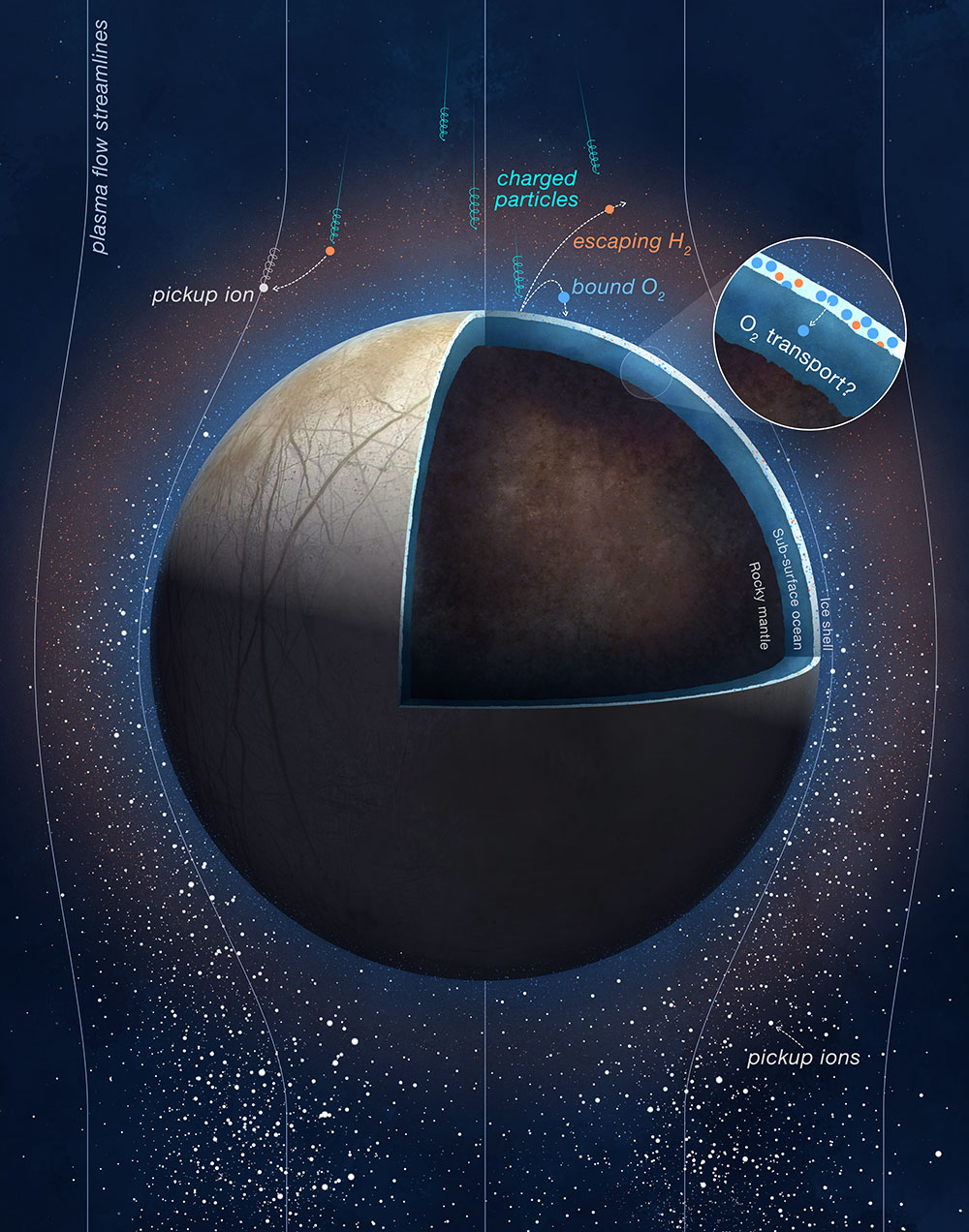
Juno carries 11 state-of-the-art science instruments designed to study the Jovian system, including nine charged-particle and electromagnetic-wave sensors for studying Jupiter’s magnetosphere.
“Our ability to fly close to the Galilean satellites during our extended mission allowed us to start tackling a breadth of science, including some unique opportunities to contribute to the investigation of Europa’s habitability,” said Scott Bolton, Juno’s principal investigator from the Southwest Research Institute in San Antonio. “And we’re not done yet. More moon flybys and the first exploration of Jupiter’s close ring and polar atmosphere are yet to come.”
Oxygen production is one of many facets that NASA’s Europa Clipper mission will investigate when it arrives at Jupiter in 2030. The mission has a sophisticated payload of nine science instruments to determine if Europa has conditions that could be suitable for life.
Now Bolton and the rest of the Juno mission team are setting their sights on another Jovian world, the volcano-festooned moon Io. On April 9, the spacecraft will come within about 10,250 miles of its surface. The data Juno gathers will add to findings from past Io flybys, including two extremely close approaches of about 932 miles on Dec. 30, 2023, and Feb. 3, 2024.
NASA’s Jet Propulsion Laboratory, a division of Caltech, manages the Juno mission for the principal investigator, Scott Bolton, of the Southwest Research Institute in San Antonio. Juno is part of NASA’s New Frontiers Program, which is managed at NASA’s Marshall Space Flight Center for the agency’s Science Mission Directorate. The Italian Space Agency funded the Jovian InfraRed Auroral Mapper. Lockheed Martin Space in Denver built and operates the spacecraft.























